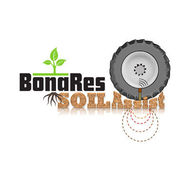Soil Penetration Resistance after One-Time Inversion Tillage: A Spatio-Temporal Analysis at the Field Scale (2020)
Kuhwald M., Hamer W., Brunotte J., Duttmann R.
Land, 9 (12), 482
Abstract
Conservation agriculture may lead to increased penetration resistance due to soil compaction. To loosen the topsoil and lower the compaction, one-time inversion tillage (OTIT) is a measure frequently used in conservation agriculture. However, the duration of the positive effects of this measure on penetration resistance is sparsely known. Therefore, the aim of this study was to analyze the spatio-temporal behavior of penetration resistance after OTIT as an indicator for soil compaction. A field subdivided into three differently tilled plots (conventional tillage with moldboard plough to 30 cm depth (CT), reduced tillage with chisel plough to 25 cm depth (RT1) and reduced tillage with disk harrow to 10 cm depth (RT2)) served as study area. In 2014, the entire field was tilled by moldboard plough and penetration resistance was recorded in the following 5 years. The results showed that OTIT reduced the penetration resistance in both RT-plots and led to an approximation in all three plots. However, after 18 (RT2) and 30 months (RT1), the differences in penetration resistance were higher (p < 0.01) in both RT-plots compared to CT. Consequently, OTIT can effectively remove the compacted layer developed in conservation agriculture. However, the lasting effect seems to be relatively short.

